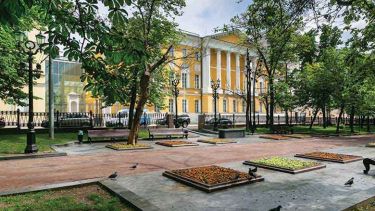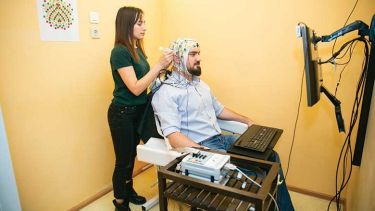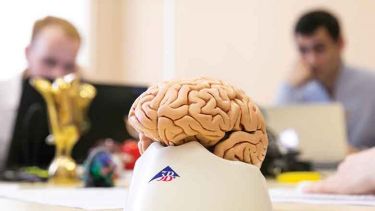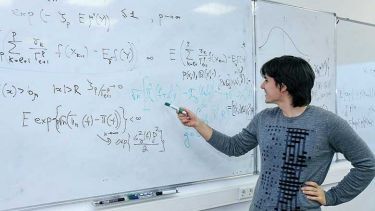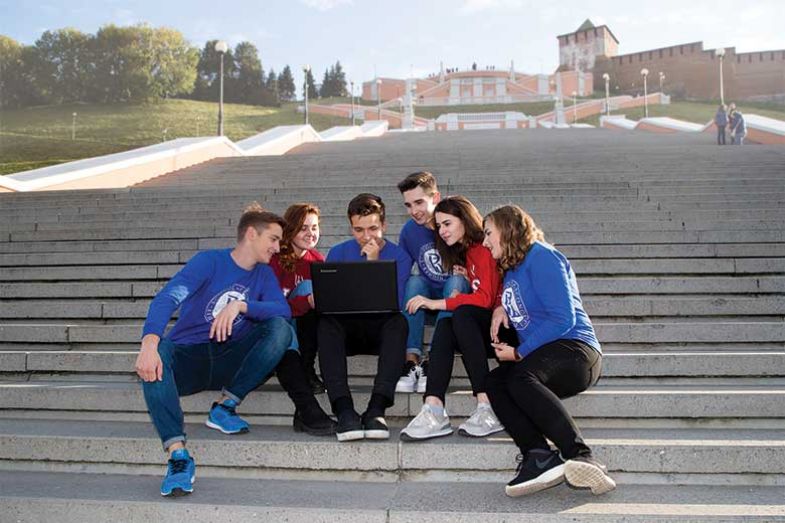
Source:
HSE University

HSE University’s Laboratory of Algorithms and Technologies for Networks Analysis has attracted worldwide interest for its work on AI for smartphones
If you happen to own any one of the estimated 8.97 billion smartphones in use globally, it won’t have escaped your attention that imaging technology is a huge growth industry.
From photo categorisation to facial recognition apps that can artificially age you for entertainment purposes, it is clear that machine learning will play an increasingly dominant role in the future development of our devices.
But what real-world purpose do these applications have and how can they be used responsibly to avoid breaches of data privacy? These are some of the key questions being tackled by Andrey Savchenko, a senior computer sciences researcher at Russia’s HSE University campus in Nizhny Novgorod (pictured, below).
As leading research fellow at HSE’s Laboratory of Algorithms and Technologies for Networks Analysis, Professor Savchenko has witnessed light-speed developments in artificial intelligence research over the past decade. “When I started my research 11 years ago, the first smartphones were just appearing,” he says. “Nobody could imagine the kind of problems we would be tackling now.”
Luckily for consumers, real-life issues such as limited battery life and data protection are areas that Professor Savchenko and his colleagues are addressing through their work.
Set up in 2011, LATNA was created for the purpose of establishing international relations in the field of algorithmic techniques and technologies for networks analysis. It is funded by the government and forms part of an overhaul of the Russian research system (HSE is one of 21 universities to receive support under Russia’s Project 5-100, which aims to boost the country’s university research output and elevate five leading institutions into the top 100 global university rankings by 2020).
“It’s a really good time to research in Russia,” says Professor Savchenko. “HSE is providing lots of opportunities. It’s a very different climate from how it was 10 years ago. It’s also good for students to see that there is this positive attitude towards research in artificial intelligence and funding right now.”
The laboratory’s discoveries include new methods to enhance image identification on videos and a novel neural network with the power to overcome flaws in AI technology found in instance-based learning classifiers, such as a high run time and memory space complexity.
Professor Savchenko specialises in AI in relation to computer vision, in particular the efficiency of classification algorithms.
As part of a project with Samsung, he is working on facial identification – that is, the ability to teach smart technology to recognise faces from the photos in the gallery on your mobile phone or tablet to assist with their organisation. By learning when and where users tend to take their photos, Samsung phones will be able to recommend places, events and activities of interest to them – for instance, when they are travelling to a new city.
To many, this will sound like a natural next step in terms of the information already harvested by our phones. But Professor Savchenko admits that data privacy is a major challenge, which is why HSE is working hard to ensure that such technologies are developed “responsibly, with data protection in mind”.
“I do get questions at conferences from people asking me, ‘are you sure Samsung will use the information on the device without leaks?’,” he admits. “I tell them, ‘I hope it will be used for good’.” Key to maintaining users’ privacy is ensuring that the AI is built within the device itself and that data are not shared outwards through a remote server.
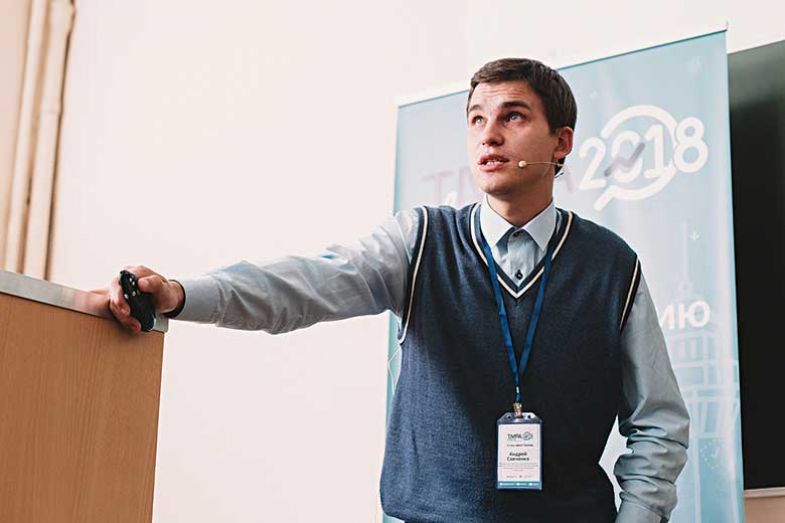
Unsurprisingly, there is a lot of interest from commercial companies in HSE’s research capabilities. Nizhny Novgorod may be 260 miles (420km) away from Moscow, but Professor Savchenko and his colleagues network with multinationals such as Intel, Huawei, Samsung and some smaller but promising tech start-ups, suggesting that the laboratory has been successful in achieving an international reach.
For its team, this demand is flattering but brings its own challenges. “Many students are attracted to [work for] these companies,” says Professor Savchenko. “They don’t want to spend all their time in universities, so we usually have our students only for a few years, and repeat the cycle again and again. When a [research] student is with you for one or two years [only], it is really challenging to obtain an interesting scientific result in such a short time.”
Students often join LATNA from industry, work there until they gain a diploma or an equivalent qualification, then return to their sponsor company. But this model is not without benefit to HSE. Professor Savchenko is confident that the laboratory’s alumni will spread the word about the progress it is making, further raising its profile in industry and internationally.
This is perhaps informed by the fact that Professor Savchenko started his career in industry as an engineer project lead. “After I received my university master’s degree, I didn’t think I would be back, but then I did my PhD alongside [working in industry] and I felt that something was changing at HSE,” he says.
Historically, universities in Russia were largely separated into institutions for teaching and institutions for research. But in recent years, with the growth of internationalisation and global competition within research and innovation, the Russian government has realised the benefits of merging these two sectors, hence the creation of Project 5-100.
“A decade ago, the situation was [not good] but now there are plenty of opportunities for researchers to travel abroad, participate in conferences, obtain funding for projects…I saw that it was possible [to forge a career like this] so I moved back to academia and I am happier for it,” says Professor Savchenko. For him, the best part of working at HSE is that it has “absolute freedom in everything related to my job. And if I can promote my research and show that it is interesting not only for me but to benefit someone else, that’s also really nice.”
As to what the future of AI research holds, he is hesitant to make predictions. “When I lecture on AI, I might say: ‘OK, there’s a really old paper published three years ago…’,” he laughs. “[The findings] are incomparable. It’s history, because the subject moves so fast.”
He is, however, confident that “most of the internet” will eventually be programmed using AI engineering. “I do think that AI will have a positive role…but it’s difficult to imagine how our techniques and methods will be used in future – that’s the real challenge,” he concludes. “There is great responsibility in the hands of the researchers of the future.”
Find out more about HSE University

